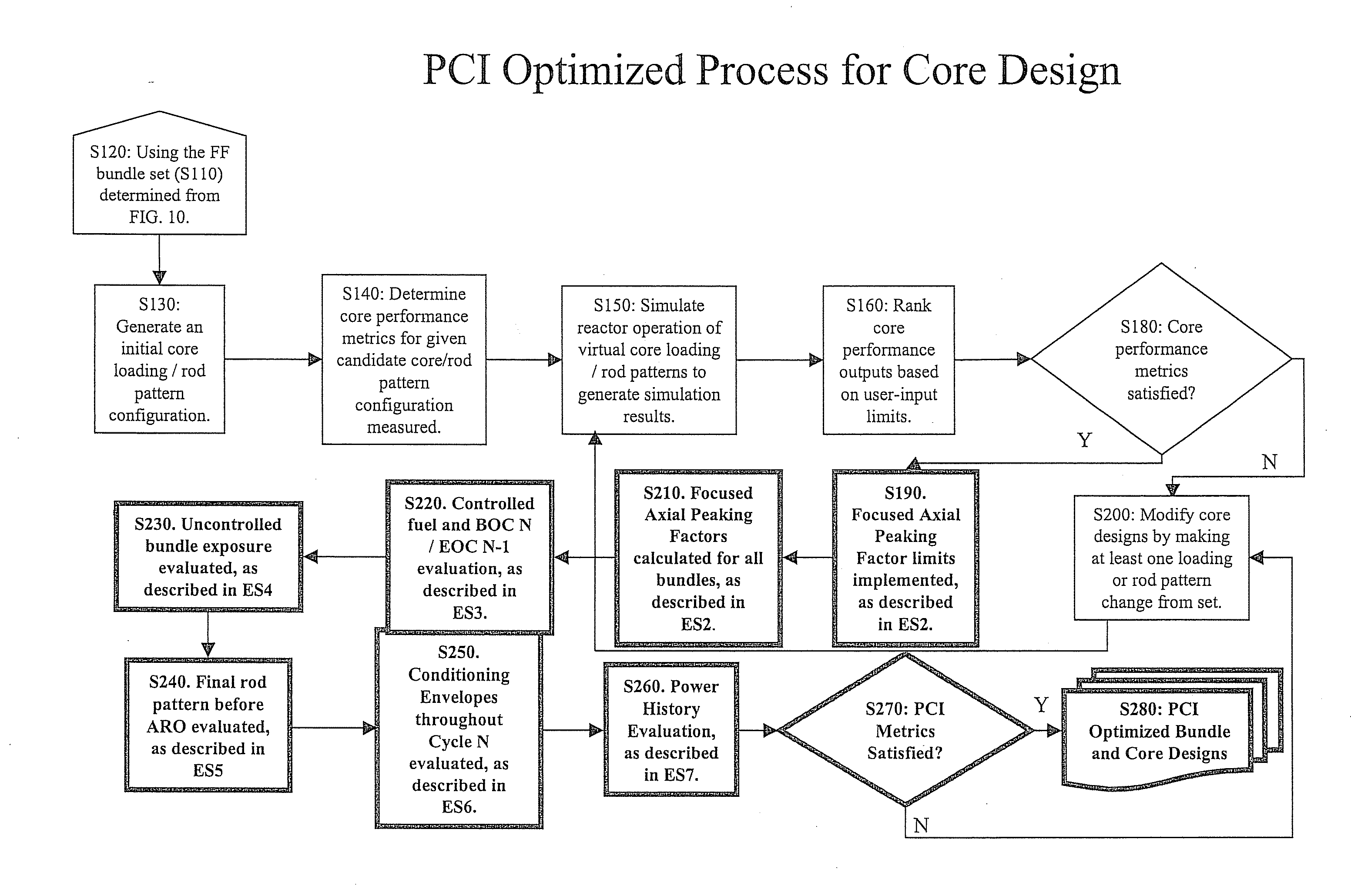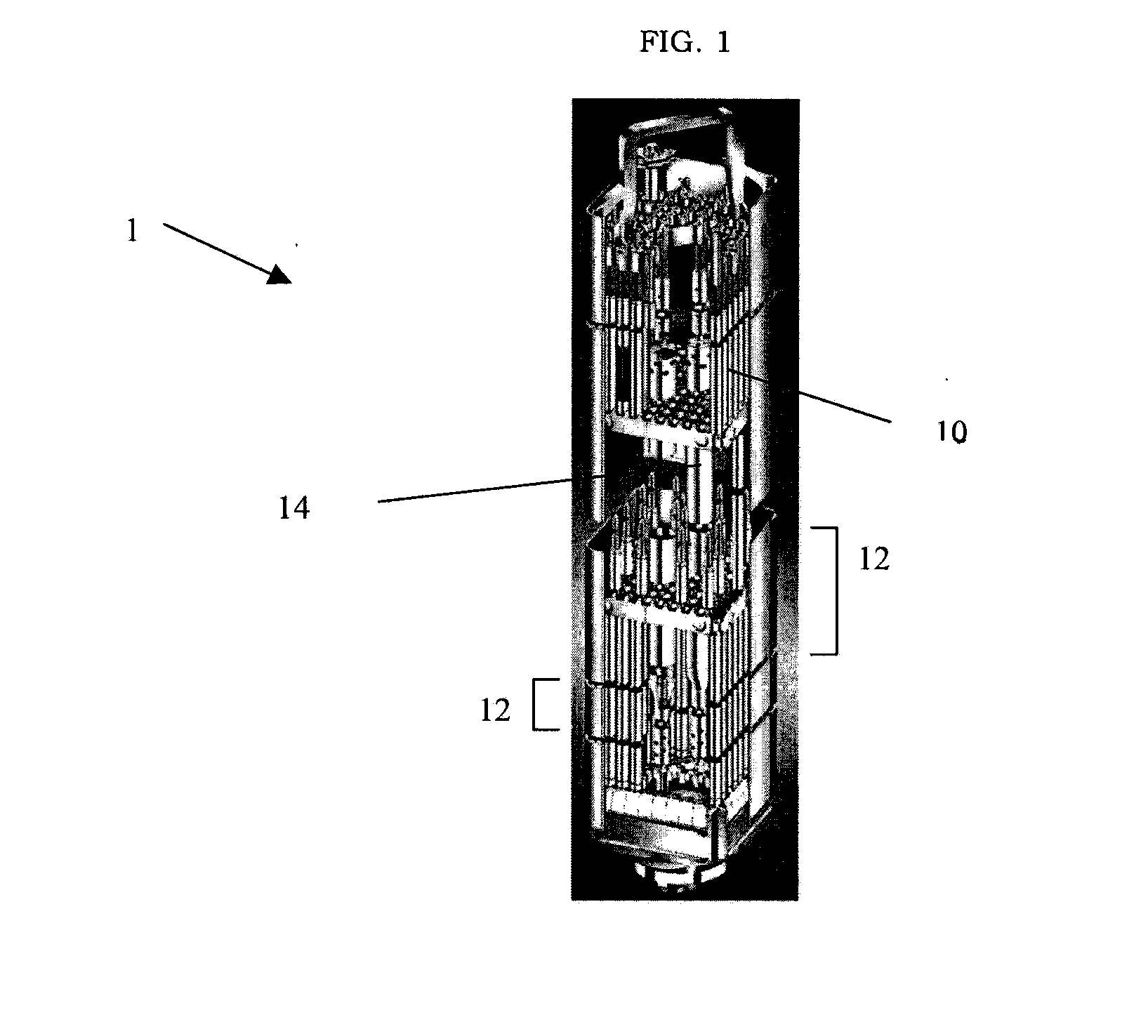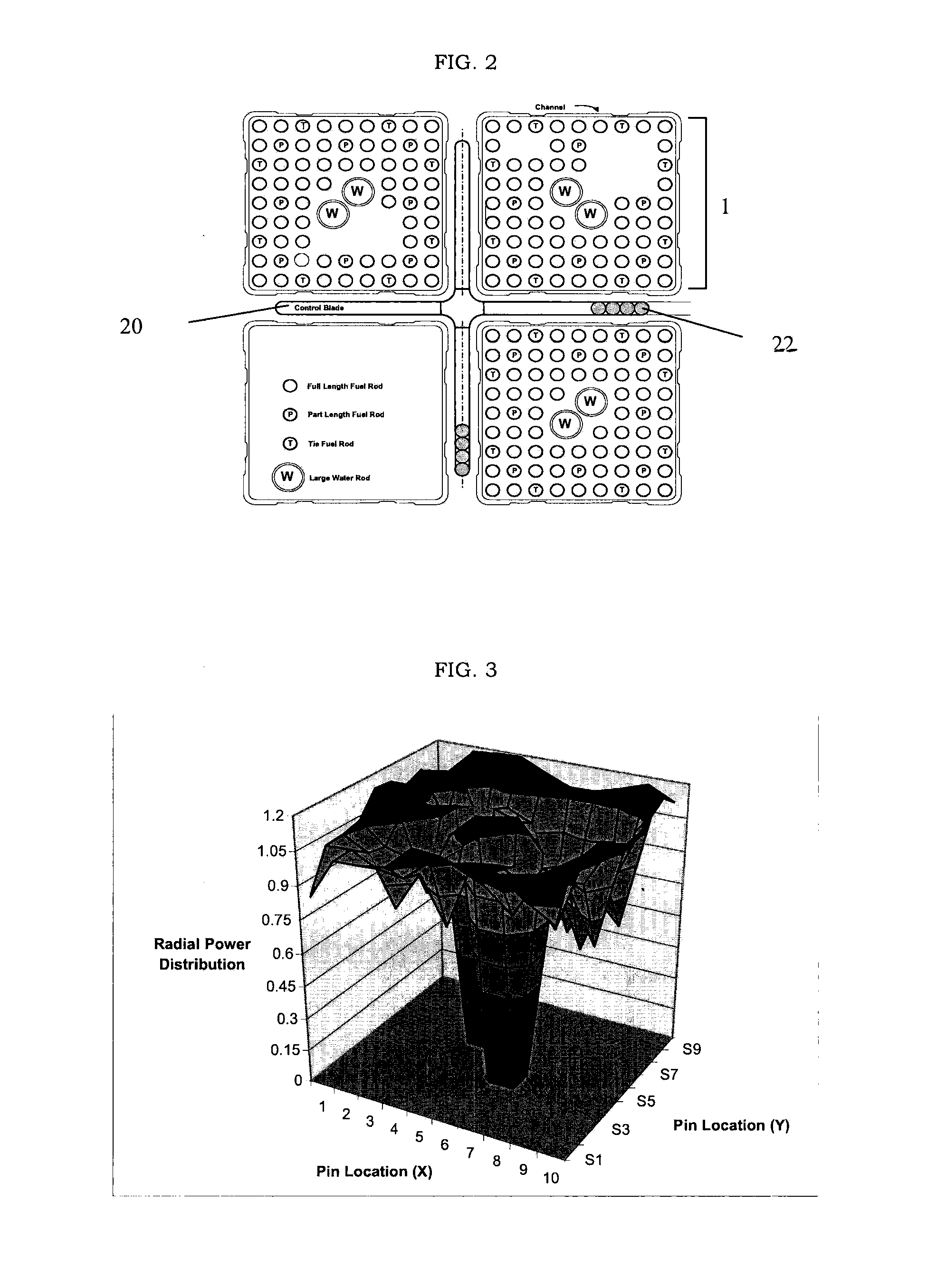Method for pellet cladding interaction (PCI) evaluation and mitigation during bundle and core design process and operation
a technology of cladding interaction and cladding, which is applied in the direction of nuclear elements, instruments, greenhouse gas reduction, etc., can solve the problems of affecting the reliability of fresh bundles, affecting the efficiency of cladding, and affecting the reliability of cladding. , to achieve the effect of improving one or more of fuel reliability, accelerating middle-of-cycle sequence exchange, and improving fuel reliability
- Summary
- Abstract
- Description
- Claims
- Application Information
AI Technical Summary
Benefits of technology
Problems solved by technology
Method used
Image
Examples
example embodiment
[0036]FIGS. 10 and 11 describe an example embodiment of fuel bundle and core design, respectively. The example embodiments may include several PCI Evaluation Methods, as shown in the highlighted method steps S80-S100 and S190-S280. These method steps are specific to the mitigation of PCI and are described in detail as PCI Evaluation Methods 1-7, included in the FIGS. 10 and 11 discussion, below. It should be noted that the described methodology may be accomplished by a computer, such as a core design computer, or it may be implemented by computer code or a core design simulation program. In particular, some or all of the PCI Evaluation Methods 1-7 may be incorporated into existing core simulators or core monitors, to ensure that PCI mitigation is incorporated into either the fuel bundle design, core monitoring, core design, or both fuel bundle and core design and core monitoring.
[0037]It should be noted that fuel bundle and core design evaluation steps shown in FIGS. 10 and 11 are t...
PUM
 Login to View More
Login to View More Abstract
Description
Claims
Application Information
 Login to View More
Login to View More - R&D
- Intellectual Property
- Life Sciences
- Materials
- Tech Scout
- Unparalleled Data Quality
- Higher Quality Content
- 60% Fewer Hallucinations
Browse by: Latest US Patents, China's latest patents, Technical Efficacy Thesaurus, Application Domain, Technology Topic, Popular Technical Reports.
© 2025 PatSnap. All rights reserved.Legal|Privacy policy|Modern Slavery Act Transparency Statement|Sitemap|About US| Contact US: help@patsnap.com



